Peter Paul Rubens and Anthony van Dyck Flashcards
1/16
There's no tags or description
Looks like no tags are added yet.
Name | Mastery | Learn | Test | Matching | Spaced |
|---|
No study sessions yet.
17 Terms

Study of Two Heads (Peter Paul Rubens)
1609, Antwerp, Belgium, Oil on wood
Rubens would paint live studies of heads after models, and would in turn use these model studies for reference in his paintings (particularly religious and mythological)
This one ended up various as a saint, high priest, river god, and a philosopher Plato
Rubens’ disciples, including van Dyck, would also follow this method
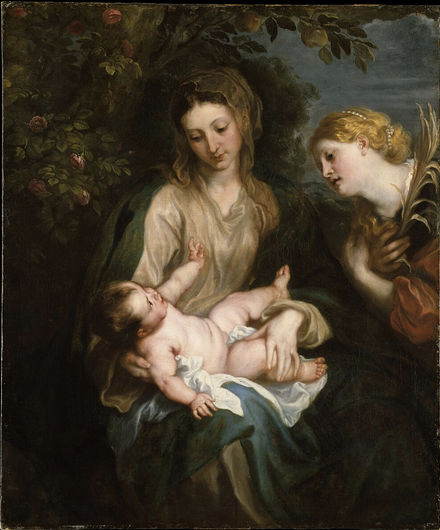
Virgin and Child with Saint Catherine of Alexandria (Anthony van Dyck)
1630, Antwerp, Belgium, Oil on canvas
Shows baby Jesus responding positively to Saint Catherine, a princess (identified by pearls and a 'martyr’s palm)
she was an intercessor, one who prays on behalf of others, for your women because of her “mystical marriage” to Christ (???)
The humanity and rhythmic composition shows van Dyck’s admiration for Italian artists such as Titian and Veronese
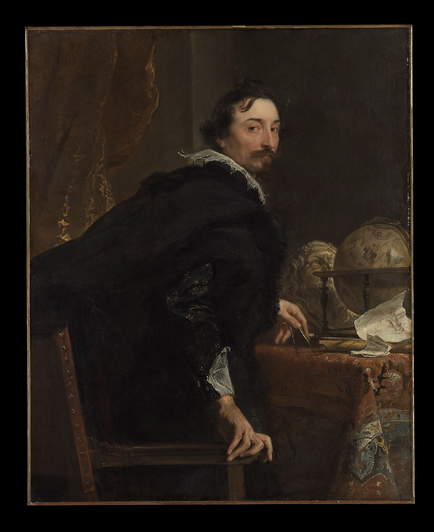
Lucas van Uffel (Anthony van Dyck)
1622, Antwerp, Belgium, Oil on canvas
van Uffel was a wealthy Flemish merchant living in Venice, where van Dyck painted his portrait
He was inspired by Venetian portraits from the High Renaissance, and thus painted him with tools of his interests and trades, such as writing tools and musical instruments
His pose turning towards the viewer adds a dynamic quality to the portrait

Wolf and Fox Hunt (Peter Paul Rubens and Workshop)
1616, Antwerp, Belgium, Oil on Canvas
This picture was the start of a new art form: large hunting scenes painted on canvas
this art form would replace tapestries, which were much more expensive at the time
this piece was originally much larger, but trimmed to fit in a collector’s home
Rubens had his assistants help paint this picture, but claimed the wolves were his own work
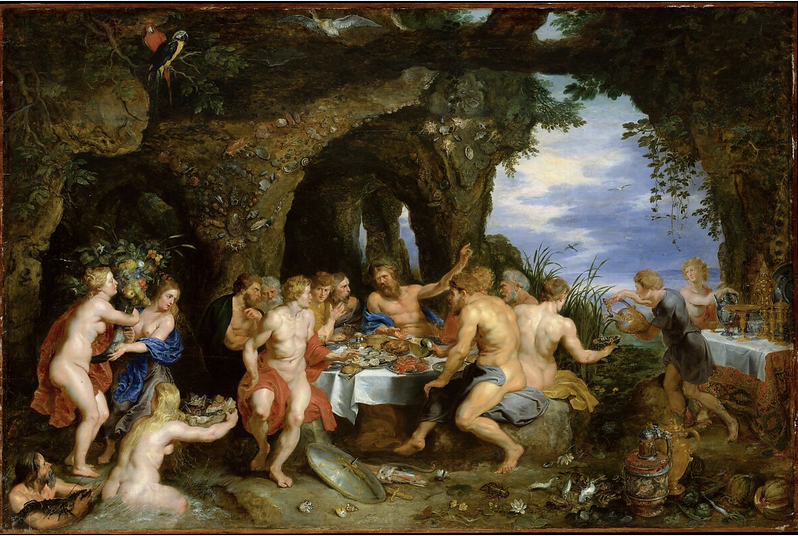
The Feast of Achelous (Peter Paul Rubens, Jan Brueghel the Elder)
1615, Antwerp, Belgium, Oil on Wood
Collaboration between two artists to show their respective skills, Rubens painting the figures and Brueghel painting everything else (landscape/still life)
This painting shows the river god Acheloüs talking to Theseus that his former lover has been transformed into an island to remain in the river’s embrace
the artists focused on nudes based on classical sculpture, this painting was meant for a sophisticated collector

Study Head of a Young Woman (Anthony Van Dyck)
1618-20, Antwerp, Belgium, Oil on paper, laid on wood
Rubens would paint live studies of heads after models, and would in turn use these model studies for reference in his paintings (particularly religious and mythological)
this same practice is repeated here by his disciple,van Dyck
This portrait likely served as a prototype for a Virgin Mary likeness in a depiction of the Holy Family
a melancholy young woman with long hair also looks like Mary Magdalen
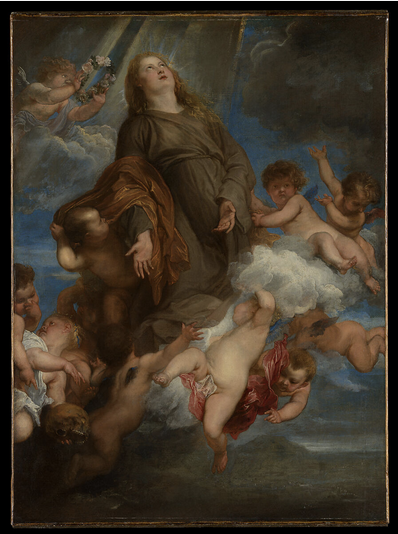
Saint Rosalie Interceding for the Plague-stricken of Palermo (Anthony van Dyck)
1624, Belgium, Antwerp, Oil on canvas
Van Dyck was in Sicily, Italy, when a plague broke out and the city was quarantined
The lady here is Saint Rosalie, the 12th century patroness, whose remains were discovered during the epidemic
(and whose portraits were in great demand)
This was painted on top of a self-portrait, and was one of the first paintings in the MET collection

The Glorification of the Eucharist (Peter Paul Rubens)
1630-32, Antwerp, Belgium, Oil on wood
This piece had a sketch by Rubens, and was completed by painter Gerard Seghers and sculptor Hans van Mildert
Shows the risen Christ triumphing over sin and death, flanked by biblical characters and saints, with architectual motifs added by Rubens surrounding them
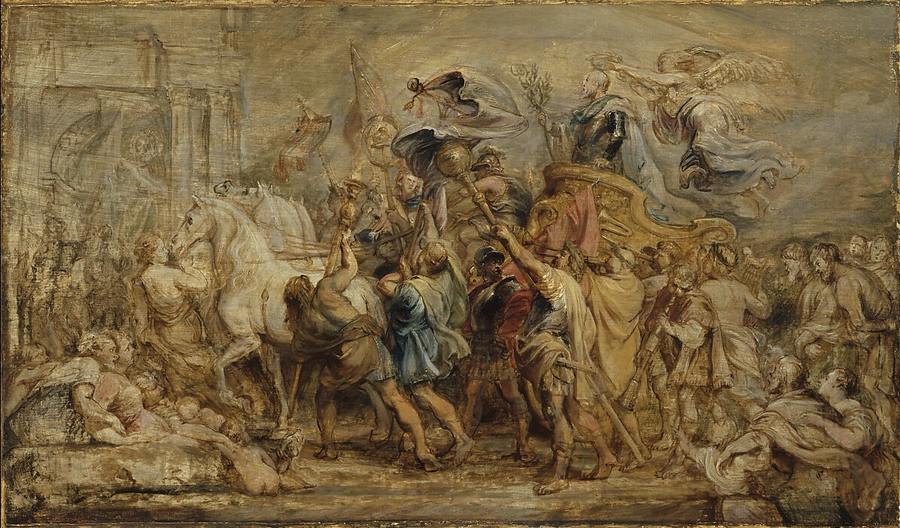
The Triumph of Henry IV (Peter Paul Rubens)
1630, Antwerp, Belgium, Oil on Wood
Part of the 48 large commissioned canvases for the king’s widow, Maria de’ Medici, decorating the Palais de Luxembourg, showing her life
This shows Henry IV entering Paris in “the manner of the triumphs of the Romans”
This was part of a companion series showing her husband’s life after the first series’ completion in 1624, but little was completed before her banishment in 1631
the oil sketch was the last of 4 of which Rubens worked out heroic events from recent history
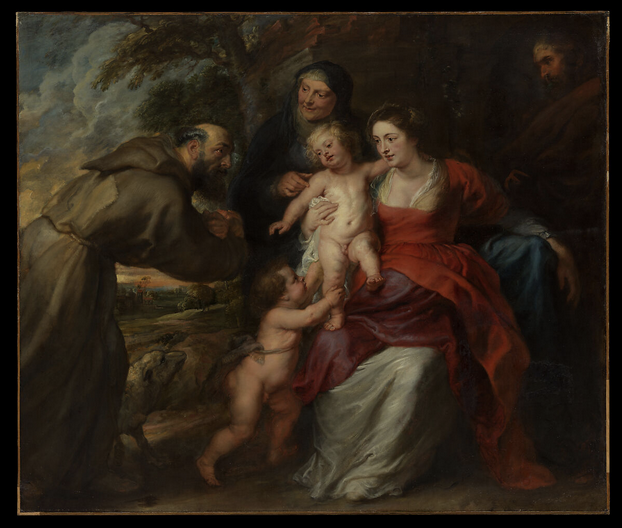
The Holy Family with Saints Francis and Anne and the Infant Saint John the Baptist (Peter Paul Rubens)
1630s, Antwerp, Belgium, Oil on canvas
A vision of the holy Family to Saint Francis
Shows Rubens’ normal style, with warm hues, detailed flesh and fabric folds, and bond between mother and child
This was one of the first works to enter a public collection in the United States
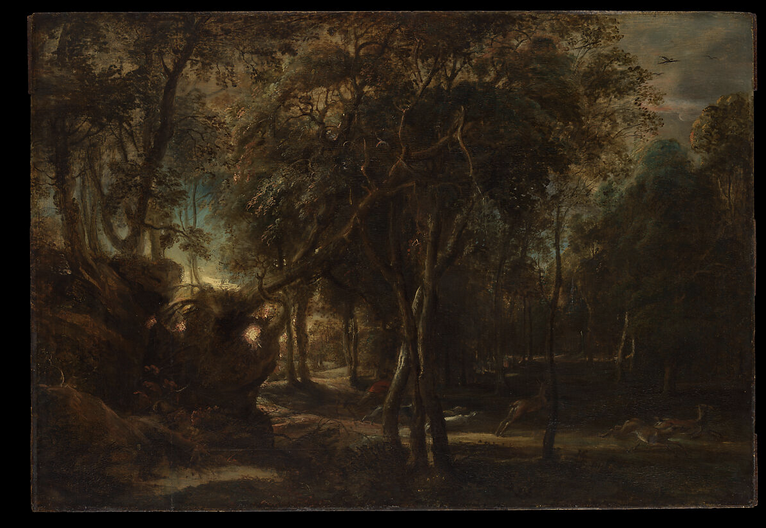
A Forest at Dawn with a Deer Hunt (Peter Paul Rubens)
1635, Antwerp, Belgium, Oil on Wood
This painting depicts Rubens experience as a new manor (called Het Steen) owner, in which hunting was usually more commonplace in a more aristocratic environment
Shows a hunter and his hounds chasing deer in a forest
He painted this for pleasure, in the final years of his life
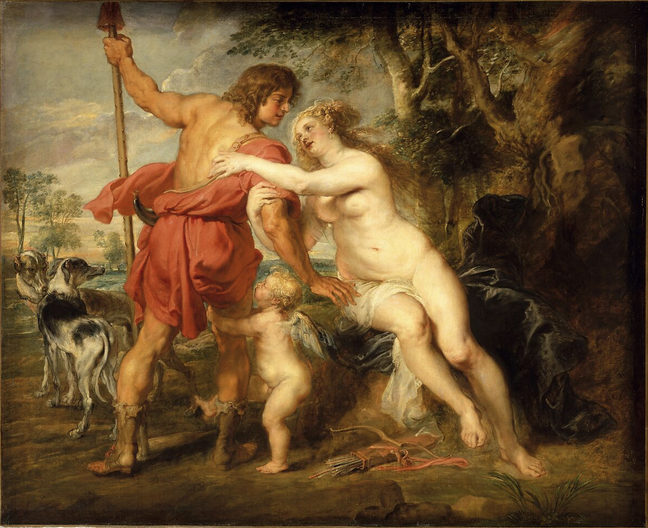
Venus and Adonis (Peter Paul Rubens)
1630s, Antwerp, Belgium, Oil on Canvas
Shows a scene from Roman poet Ovid’s Metamorphoses
Venus, pricked by one of Cupid’s arrows, falls for the hunter Adonis, and later, ignoring the goddess’s warnings of danger, he hunts a wild boar and dies
Depicting this scene of him leaving is a popular subject, also depicted by Titian in the MET
Rubens asserted his status as a worthy successor to these famous works
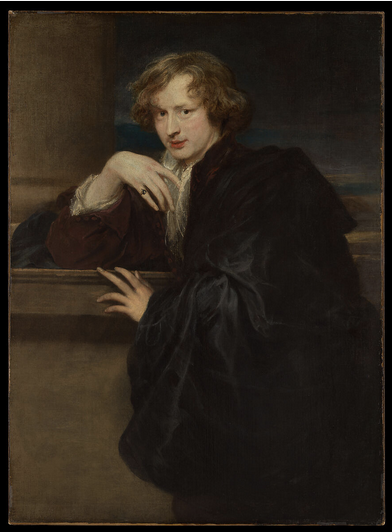
Self Portrait (Anthony van Dyck)
1620-21, Antwerp, Belgium, Oil on Canvas
The hand to his chin shows him as aristocratic, excluding his trade palette and brushes
This was probably created during his stay in the English court in 1620-21, which affected his art significantly
After that, he travelled to Italy, where his fine dress drew admiration and scorn from other artists

Portrait of a Woman, Probably Susanna Lunden (Peter Paul Rubens)
1620s, Antwerp, Belgium, Oil on wood
Rubens tended to paint portraits of friends and family with an intimate likeness
This one was probably a sister of Rubens’ second wife
Rubens shifted the veil in the course of working on the painting, and its earlier placement has become visible over time
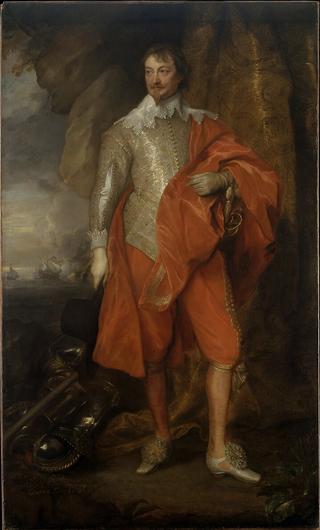
Robert Rich, Second Earl of Warwick (Anthony van Dyck)
1630s, Antwerp, Belgium, Oil on Canvas
This guy had a lot of influence on maritime world events, such as the colonization of Connecticut, Massachusetts, and Rhode Island
he also seized ships on behalf of Charles I of England and the duke of Savoy
he also sponsored the White Lion, which brought the first enslaved Africans to Virginia in 1619
despite his career in maritime management, he wears the flamboyant dress of an aristocrat, reflecting the image he wants to see of himself

James Stuart, Duke of Richmond and Lennox (Anthony van Dyck)
1630s, Antwerp, Belgium, Oil on Canvas
This painting may have been painted in celebration of this duke earning the insignia of the Order of the Garter in 1633, England’s highest order of chivalry
this insignia was the ‘lovelock’ spilling over his lace collar
The greyhound also adds the meaning of loyalty, and the aristocratic pastime of the hunt
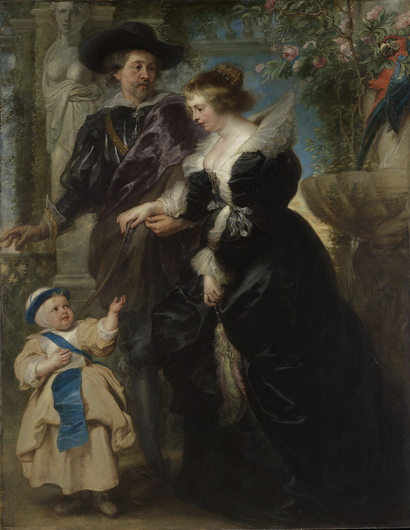
Rubens, Helena Fourment, and Their Son Frans (Peter Paul Rubens)
1635, Antwerp, Belgium, Oil on wood
Depicts the artist (Rubens) and his family, the woman being his second wife
he and his second wife had almost 40 year age gap, and many people recognized her as his muse and model
her soft and plump young hand is juxtaposed with his weathered one, showing their differences and connection
the leather strap across Rubens’ chest speaks to his right as a nobleman to carry a sword, whilst the ribbon across his son’s chest alludes to him as an heir
This work was seized by the Nazis, but returned to a baron in Paris in 1946